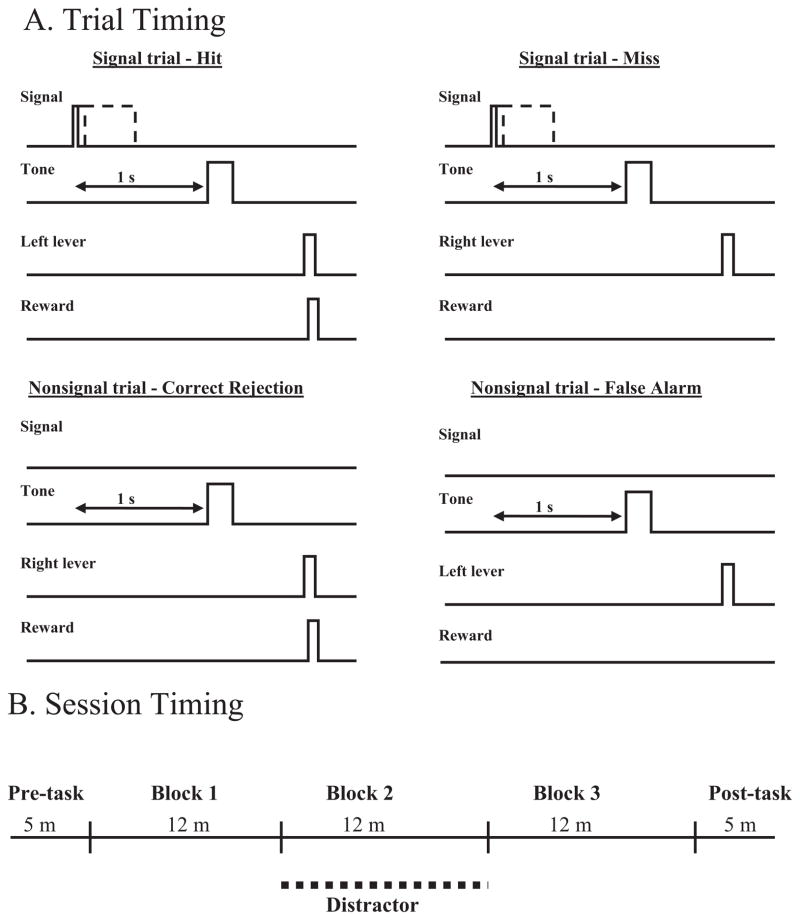Fig. 1.
Illustration of the response rules and recording epochs analyzed (A), and timeline of testing session (B). (A) Signals are illuminations of a panel light (25, 50, or 500 ms), which are followed 1 s later by tone (250 s), which opens the 4 s response window. For signal trials, left lever responses are rewarded (hits) whereas right lever responses are not (misses). Nonsignal trials have no signal light; a computer marker indicates the beginning of a trial, followed 1 s later by the tone opening the response window. Right lever responses following the tone are rewarded (correct rejections) and left lever responses are not (false alarms). A response or an omission (no response in 4 s) initiates a variable ITI (10±3 s) for the next trial. The 1 s interval prior to the tone on all trials (as represented by the double-sided arrow) is analyzed to test attention related activation of the PPC prior to a response. (B) During non-distractor blocks 1 and 3 the animal must detect visual signals and correctly reject nonsignals while a house light above the operant chamber remains continuously lit. During the second 12 min block of trials the house light flashes at 0.5 Hz, increasing the “background noise” in the task.

